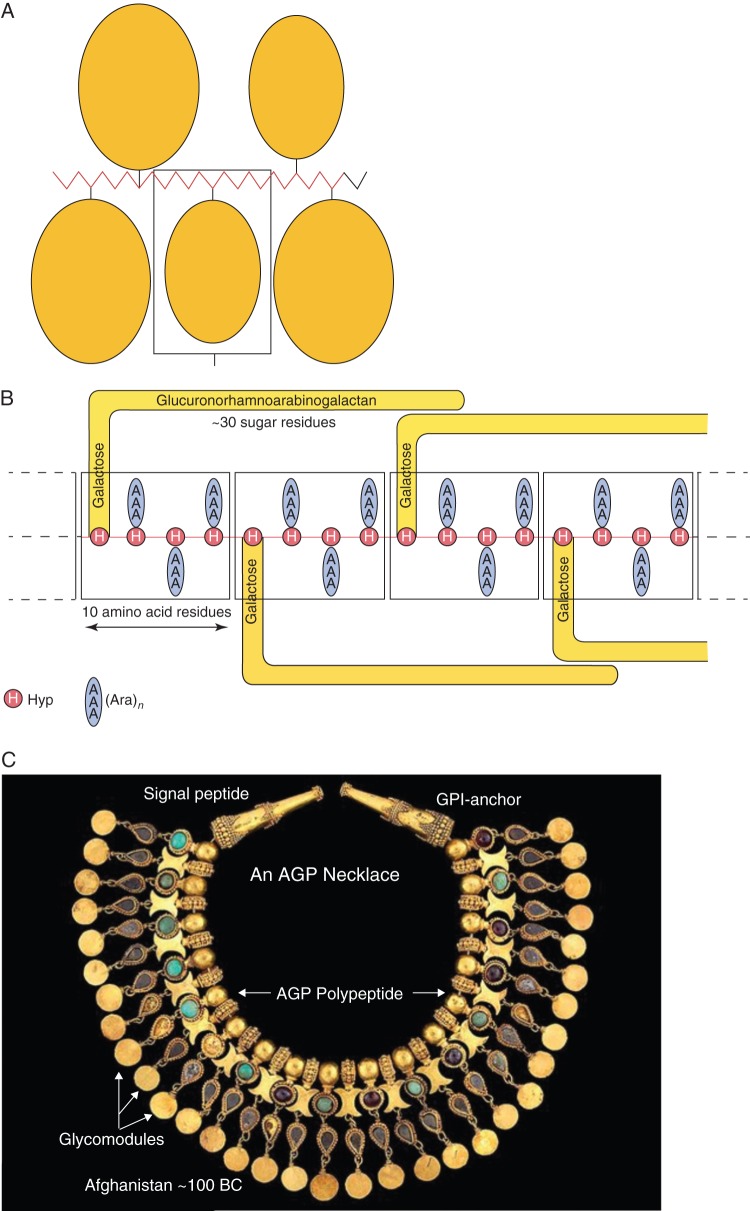Fig. 2.
AGP models: wattle blossom, hairy rope, necklace. (A) The ‘wattle-blossom’ model. Each Hyp residue of about 24 is attached to an arabinogalactan chain that contains from one to 15 repeats of a β-(l-3)-linked galactose (Gal) oligosaccharide with a degree of polymerization (d.p.) of 12. The ‘wattle-blossom’ model depicts ‘the AGP as a whole is spheroidal’: GlcA, glucuronic acid; Rha, rhamnose; Gal, galactose; Ara, arabinose; p, pyranose; f, furanose. [Reprinted from Du et al. (1996a).] (B) The ‘twisted hairy rope’ model of an AGP. Hypothetical block size of 7 kDa contains 10 amino acid residues (1 kDa), 30 sugar residues (4·4 kDa) and 3 hydroxyproline (Hyp)-triarabinosides (1·32 kDa). The glucuronorhamnoarabinogalactan probably has a galactan backbone with glucuronic acid (GlcA), rhamnose (Rha) and arabinose (Ara) side chains. [Reprinted from Qi et al. (1991) as adapted by Du et al. (1996a).] (C) AGP modelled as a necklace. An elaborate robe decoration in the form of a necklace, (Tillya Tepe), 100 BC – 100 AD; National Museum of Afghanistan; Photograph Thierry Ollivier, Musée Guimet (reproduced with permission).

